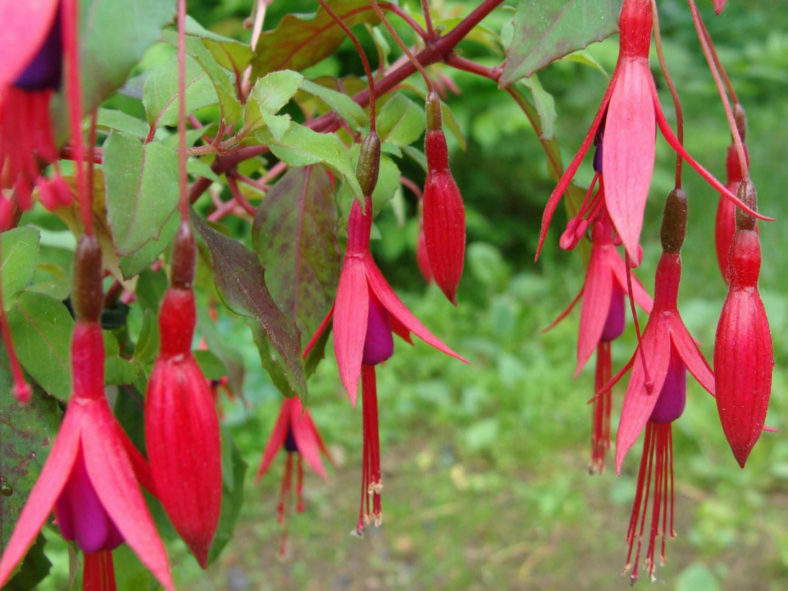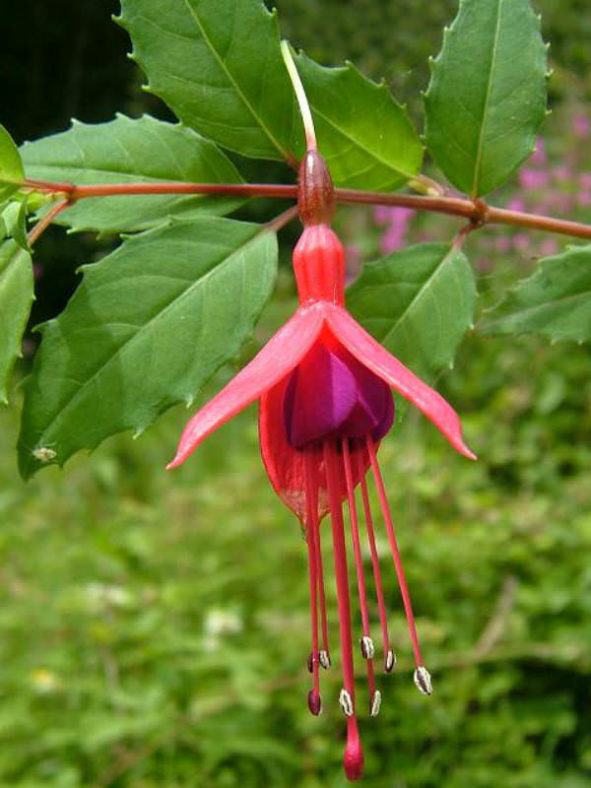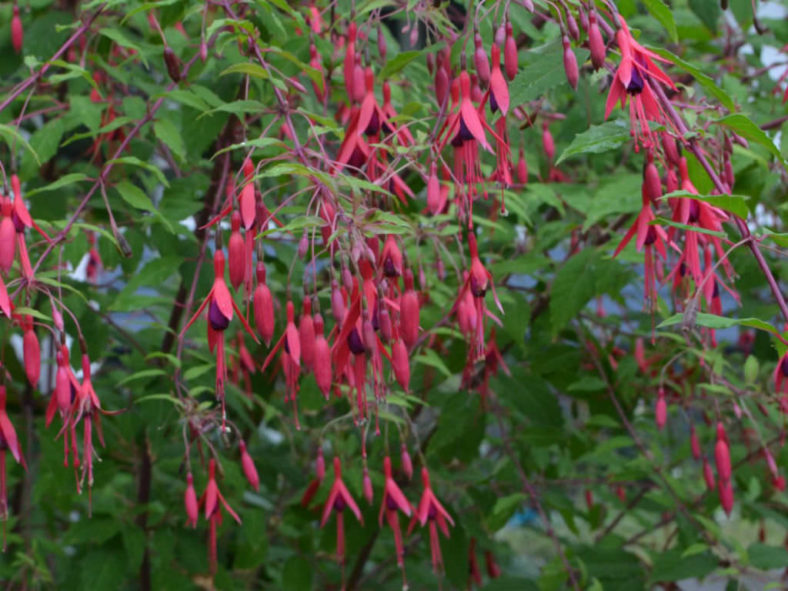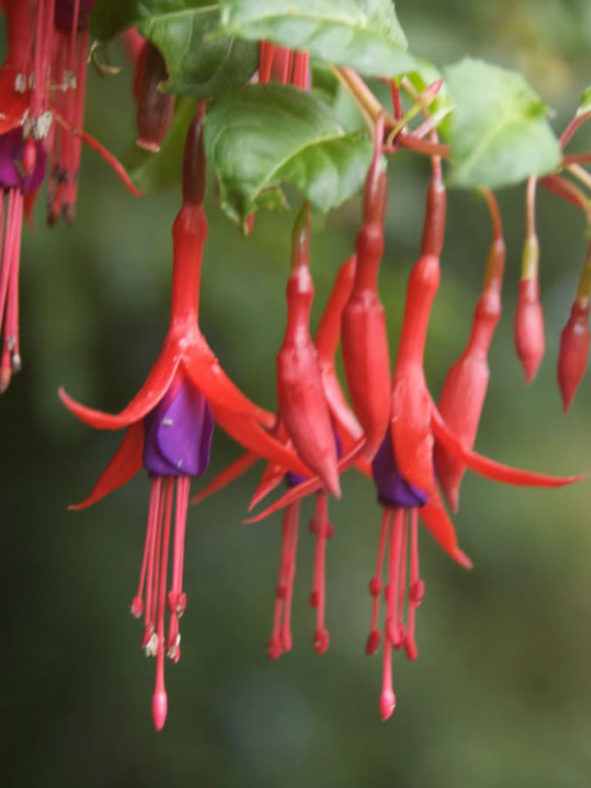Scientific Name
Fuchsia magellanica Lam.
Common Name(s)
Hardy Fuchsia, Hummingbird Fuchsia
Synonym(s)
Dorvalia eucharis, Fuchsia araucana, Fuchsia chonotica, Fuchsia conica, Fuchsia decussata, Fuchsia discolor, Fuchsia elegans, Fuchsia globosa, Fuchsia gracilis, Fuchsia lowei, Fuchsia macrostema, Fuchsia multiflora, Fuchsia myrtifolia, Fuchsia pendula, Fuchsia pumila, Fuchsia recurvata, Fuchsia riccartoniana, Fuchsia ricoartoni, Fuchsia tenella, Fuchsia thompsoni, Fuchsia virgata, Thilcum tinctorium
Scientific Classification
Family: Onagraceae
Subfamily: Onagroideae
Tribe: Circaeeae
Genus: Fuchsia
Flower
Color: Red, pink, and sometimes white
Bloom Time: Early summer to mid-fall
Description
Fuchsia magellanica is a deciduous shrub that grows up to 10 feet (3 m) tall and is nearly equal in width. The plant blooms profusely over a long period with many small tubular and pendent flowers in shades of red, pink, and sometimes white. The flowers are hermaphrodite (have both male and female organs) and are pollinated by insects. They are followed by reddish-purple fruits.

Hardiness
USDA hardiness zone 6a to 9b: from −10 °F (−23.3 °C) to 30 °F (−1.1 °C).
How to Grow and Care
Fuchsia make excellent houseplants because they are well adapted to growing in shadier conditions. In general, the more heat and light a Fuchsia is subjected to, the more careful you'll have to be about watering. In some cases, you might be watering every day. To prevent fungal problems and pests, be careful not to let your Fuchsia leaves touch the dirt. Even then, whiteflies can be a problem for Fuchsia and should be treated at the first sign of an infestation (look for white webs on the undersides of leaves). When treating for whitefly, make sure to spray the undersides of leaves thoroughly to disrupt their life cycle. To overwinter your Fuchsia, let the leaves drop off in spring, reduce watering, and move it to a cool and dark room. New growth should appear in the spring.
Repot your Fuchsia in the spring annually. These plants require a rich supply of organic material to flower and perform their best, so even if you're not stepping the plant up to a larger pot, you should repot it into a fresh pot with new soil. Add some controlled-release fertilizer pellets at repotting time to increase vigor.
See more at How to Grow and Care for Fuchsia.
Origin
This species is native to Argentina and Chile.
Links
- Back to genus Fuchsia
- Plantpedia: Browse flowering plants by Scientific Name, Common Name, Genus, Family, USDA Hardiness Zone, or Origin
Photo Gallery
Click on a photo to see a larger version.




